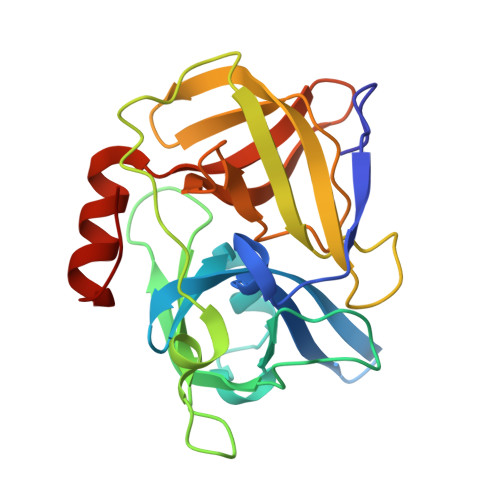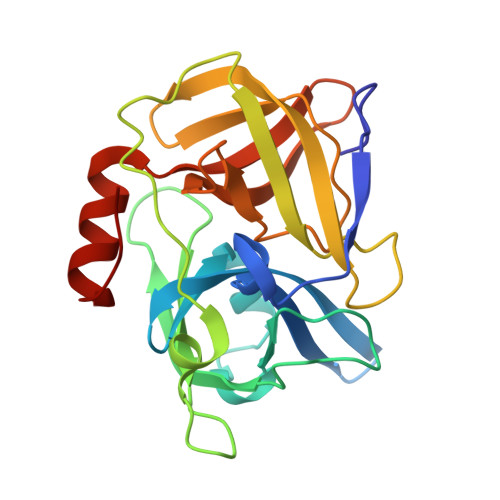Secreted proteases control autolysin-mediated biofilm growth of Staphylococcus aureus
Chen, C., Krishnan, V., Macon, K., Manne, K., Narayana, S.V., Schneewind, O.(2013) J Biological Chem 288: 29440-29452
- PubMed: 23970550
- DOI: https://doi.org/10.1074/jbc.M113.502039
- Primary Citation of Related Structures:
4JCN - PubMed Abstract:
Staphylococcus epidermidis, a commensal of humans, secretes Esp protease to prevent Staphylococcus aureus biofilm formation and colonization. Blocking S. aureus colonization may reduce the incidence of invasive infectious diseases; however, the mechanism whereby Esp disrupts biofilms is unknown. We show here that Esp cleaves autolysin (Atl)-derived murein hydrolases and prevents staphylococcal release of DNA, which serves as extracellular matrix in biofilms. The three-dimensional structure of Esp was revealed by x-ray crystallography and shown to be highly similar to that of S. aureus V8 (SspA). Both atl and sspA are necessary for biofilm formation, and purified SspA cleaves Atl-derived murein hydrolases. Thus, S. aureus biofilms are formed via the controlled secretion and proteolysis of autolysin, and this developmental program appears to be perturbed by the Esp protease of S. epidermidis.
Organizational Affiliation:
From the Department of Microbiology, University of Chicago, Chicago, Illinois 60637.


















